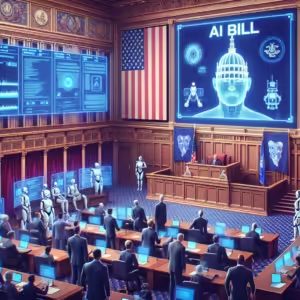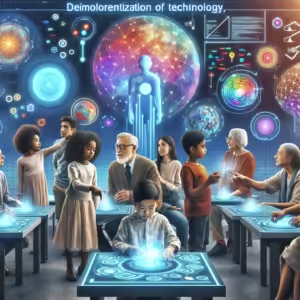Revolutionizing Public Sector Functioning Through Artificial Intelligence
In today’s fast-paced world, governments are increasingly turning to advanced technology to improve efficiency and streamline administrative processes. Artificial Intelligence (AI) stands at the forefront of this digital transformation, providing innovative solutions that optimize operations and enhance service delivery. This article explores how AI can revolutionize governmental operations, creating smarter, more efficient administrations.
The Growing Need for Efficiency in Government
Governments worldwide are facing mounting pressure to perform more efficiently due to:
- Budget constraints: With limited financial resources, there is a pressing need to maximize operational efficiency.
- Increasing citizen demands: Citizens expect faster, more personalized services.
- Workforce challenges: Aging workforces and skill shortages exacerbate the need for AI-driven solutions.
AI can address these challenges by automating routine tasks, analyzing vast amounts of data, and offering predictive insights. This technology not only improves internal government operations but also delivers enhanced services to the public.
Transformative AI Applications in Government Administration
AI is being leveraged across multiple facets of government administration. Here are some key applications:
Automating Routine Administrative Tasks
By automating repetitive tasks, AI frees up government employees to focus on more strategic, higher-value work. Key examples include:
- Document processing: AI-powered tools can quickly scan, analyze, and categorize large volumes of documents.
- Data entry: Automation of data entry eliminates human error and accelerates processing times.
- Scheduling and logistics: AI systems optimize resource allocation and scheduling for various government services.
Enhancing Data Analysis and Decision-Making
AI aids governments in analyzing extensive datasets to make informed policy decisions. Applications include:
- Predictive analytics: Governments can foresee trends and allocate resources appropriately, such as predicting health outbreaks or forecasting economic changes.
- Sentiment analysis: AI can evaluate public sentiment from social media and other sources, offering governments immediate feedback on policies and initiatives.
- Risk management: Through pattern detection, AI assists in identifying potential risks related to national security, finance, and more.
Improving Citizen Services and Interaction
AI is enhancing how governments interact with citizens by providing personalized and efficient services:
- Chatbots and virtual assistants: These tools provide 24/7 support for citizen inquiries, improving response times and service satisfaction.
- Service personalization: AI systems can tailor information and services to individual preferences or needs, ensuring a better user experience.
- Streamlining public services: From applying for permits to renewing licenses, AI automates end-to-end processes, reducing paperwork and wait times.
The Benefits of AI-Powered Government
Implementing AI in government administration yields numerous benefits, such as:
- Cost efficiency: Automation reduces operational costs and creates significant savings over time.
- Enhanced transparency: AI promotes clearer processes and accountability, improving public trust.
- Adaptability: AI systems can quickly adapt to new challenges and changes in public policy or needs.
- Workforce empowerment: Employees are freed from mundane tasks, allowing them to focus on innovation and higher-impact activities.
Navigating Challenges and Ethical Considerations
While AI promises numerous advantages, its implementation is not without challenges and ethical dilemmas:
- Data privacy: Handling vast amounts of personal data creates privacy concerns that must be addressed with robust policies and cybersecurity measures.
- Bias and fairness: AI systems can inadvertently perpetuate biases. Continuous monitoring and testing are necessary to ensure fairness and equity.
- Skill development: As AI takes over routine tasks, governments must invest in upskilling their workforce to manage and innovate with these systems effectively.
- Transparency and accountability: AI algorithms often operate as “black boxes.” Providing insights into decision-making processes is crucial for maintaining public trust.
Conclusion: The Future of AI in Government Administration
AI presents an unparalleled opportunity to transform government administration, driving efficiency and innovation. The ability to automate routine tasks, enhance decision-making, and improve citizen interaction positions AI as a key enabler of smarter governance.
As governments continue to adopt AI, they must balance innovation with ethical considerations and public accountability. Successful implementation hinges on thoughtful integration, robust policy frameworks, and continuous evaluation. Through strategic deployment, AI will play an integral role in shaping future-ready governments that better serve their citizens.








